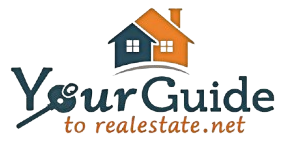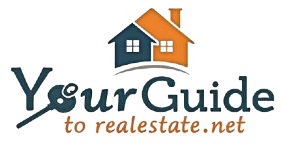Finding Your Way Through the Mortgage Maze
Mortgage options explained in simple terms: A mortgage is a loan used to buy property, with the property serving as collateral. The main types are:
- Fixed-rate mortgages: Same interest rate for the entire loan term
- Adjustable-rate mortgages: Rate stays fixed initially, then adjusts periodically
- Conventional loans: Not government-backed, typically require good credit
- Government-backed loans: FHA, VA, and USDA loans with more flexible requirements
- Jumbo loans: Exceed conforming loan limits for expensive properties
If you’re in the market for a new home, you’re probably also shopping for a mortgage—and the options can feel overwhelming. With so many loan types, terms, and interest rate structures available, finding the right fit for your financial situation might seem like hunting for a needle in a haystack.
A mortgage is more than just a loan—it’s likely the largest financial commitment you’ll ever make. The average American with a mortgage will spend about 30 years paying it back, with total interest often exceeding the original loan amount. That’s why understanding your options before signing on the dotted line is crucial.
Your mortgage choice affects not just your monthly payment, but your overall financial health for decades to come. The right mortgage can provide stability and help build wealth, while the wrong one could strain your budget or even lead to foreclosure.
Whether you’re a first-time homebuyer or looking to refinance, this guide will walk you through the mortgage landscape in plain English. We’ll explain the different types of mortgages, how they work, and which might be best for your specific situation.

Quick mortgage options explained definitions:
– cash out refinancing explained
– how to compare mortgages
– mortgage refinancing explained
Mortgage Options Explained: Types You’ll Meet on Your Home-Buying Journey

Choosing a mortgage isn’t like picking out your next smartphone. It’s more like choosing a life partner – you’ll be together for decades, through financial ups and downs. Let’s walk through the mortgage types you’ll encounter as you search for your perfect home match.
Fixed-Rate vs Adjustable-Rate: Mortgage Options Explained
When it comes to how your interest rate behaves over time, you’re essentially choosing between predictability and flexibility.
Fixed-rate mortgages keep the same interest rate from your first payment to your last, typically over 15 or 30 years. About two-thirds of homebuyers gravitate toward this option, and it’s easy to see why. You’ll enjoy complete predictability in your principal and interest payments – the amount you pay in year 1 is the same as in year 30. This budget stability means no midnight worries about rising rates, giving you peace of mind as you plan your financial future.
Fixed-rate mortgages shine brightest for folks planning to put down roots for at least 7 years, or anyone who sleeps better knowing exactly what their housing costs will be in 2035 and beyond.
On the flip side, adjustable-rate mortgages (ARMs) offer an initial honeymoon period with a fixed rate (usually 3-10 years), then shift to periodic adjustments based on market conditions.
The naming tells you how they work – a 5/6 ARM stays fixed for 5 years, then adjusts every 6 months afterward, while a 7/1 ARM holds steady for 7 years before adjusting annually. ARMs typically offer lower initial rates (often 0.5-1% below fixed rates), include rate caps to prevent payment shock, and can provide potential savings if you move before the fixed period ends or if interest rates decline.
For a deeper dive, check out the Consumer Handbook on Adjustable-Rate Mortgages. Most ARMs include caps limiting increases to around 5 percentage points over the loan’s lifetime.
ARMs make perfect sense if you’re planning to move before the fixed period ends, if you’re betting on falling interest rates, or if your budget could handle the maximum possible payment should rates climb to their cap.
Conventional & Jumbo Loans: Balancing Limits and Lifestyle
Conventional loans represent the bread and butter of mortgage lending, accounting for about two-thirds of loans in America. Unlike government-backed options, these loans come in two varieties:
Conforming loans play by the rulebook established by Fannie Mae and Freddie Mac, including staying within loan limits. For 2025, you can borrow up to $806,500 for a single-family home in most areas, or up to $1,209,750 in pricier markets.
Non-conforming loans color outside these lines, either exceeding the limits or marching to their own drummer regarding other criteria.
To qualify for a conventional loan, you’ll typically need a credit score of at least 620-660, a down payment of 3% or more (though 20% helps you avoid private mortgage insurance), and a debt-to-income ratio below 45-50%.
When conventional loans just won’t stretch far enough, jumbo loans step in to finance luxury homes or properties in red-hot markets. These financial heavyweights come with stricter requirements: credit scores typically need to be 700+ (often 720 or higher), down payments start at 10-20%, and you’ll need substantial cash reserves and a lower debt-to-income ratio (usually 36-43%).
Since jumbo loans represent bigger risks for lenders, they’ve traditionally carried slightly higher interest rates, though this gap has narrowed considerably in recent years.
FHA, VA & USDA Loans: Opening Doors with Government Support
Government-backed loans serve as the welcome mat to homeownership for many Americans who might otherwise be left on the doorstep.
FHA loans, insured by the FHA, offer a gentler path to homeownership. You can qualify with a credit score as low as 580 with just 3.5% down, or even 500 with 10% down. These loans also accommodate higher debt-to-income ratios than their conventional cousins.
The trade-off? You’ll pay mortgage insurance premiums (MIP) regardless of your down payment – an upfront premium of 1.75% of the loan amount plus an annual premium between 0.45% and 1.05%.
VA loans are a heartfelt “thank you” to those who’ve served, backed in part by the U.S. Department of Veterans Affairs. For eligible service members, veterans, and surviving spouses, these loans offer remarkable benefits: no down payment required, no private mortgage insurance, competitive interest rates, and more flexible credit requirements.
Instead of PMI, VA loans include a one-time funding fee ranging from 1.25% to 3.3% of the loan amount, which can be rolled into the loan.
USDA loans, designated by the U.S. Department of Agriculture, bring homeownership to rural and some suburban communities. These gems offer zero down payment, lower mortgage insurance costs than FHA, and competitive interest rates.
Qualification requires your household income to stay below 115% of the area median income, your debt-to-income ratio should be 41% or less, and your credit score should be at least 640.
Niche Products: Interest-Only, Balloon, HELOCs & Reverse Mortgages
Beyond the standard options, several specialized mortgage options explained below serve unique situations and needs:
Interest-only loans let you pay just the interest for an initial period (typically 5-10 years). Afterward, you’ll either make a balloon payment, refinance, or begin paying principal and interest on a normal schedule. These can be perfect for borrowers expecting a significant income boost, those planning to sell before the interest-only period ends, or savvy investors with specific cash flow strategies.
Balloon mortgages feature small payments for a short term (usually 5-7 years), followed by one large “balloon” payment for the remaining balance. A balloon mortgage might work well if you’re planning to sell or refinance before the balloon payment comes due, expecting a windfall, or need short-term financing for a specific purpose.
Second mortgages allow you to tap your home equity while keeping your primary mortgage intact. Second mortgages come as either home equity loans (fixed-amount, lump-sum loans with set repayment terms) or home equity lines of credit (HELOCs) (revolving credit lines you can draw from as needed). These are fantastic for funding home improvements, education costs, or consolidating high-interest debt.
Reverse mortgages serve homeowners aged 62 and older, changing home equity into income without selling. With a reverse mortgage, you receive payments from the lender instead of making them, the loan becomes due when you move out, sell the home, or pass away, and your heirs can either repay the loan or surrender the property. These can be lifesavers for seniors who are house-rich but cash-poor and need additional retirement income.
How Rates, Terms & Insurance Shape Your Payment
Buying a home isn’t just about finding the perfect kitchen or backyard—it’s about finding the mortgage payment that won’t keep you up at night. Let’s look at how different loan structures might affect your monthly budget on a $400,000 home purchase:
| Loan Type | Interest Rate | Term | Down Payment | Monthly P&I* | Total Interest Paid |
|---|---|---|---|---|---|
| 30-Year Fixed | 6.83% | 30 years | 20% ($80,000) | $2,096 | $434,560 |
| 15-Year Fixed | 6.03% | 15 years | 20% ($80,000) | $2,691 | $164,380 |
| 5/6 ARM | 6.25% initially | 30 years | 20% ($80,000) | $1,969 initially | Varies with adjustments |
*P&I = Principal and Interest (does not include taxes, insurance, or PMI)
The numbers don’t lie—that 15-year loan might pinch your monthly budget a bit more, but it saves you a whopping $270,180 in interest! That’s enough for a vacation home in some parts of the country.
Your monthly mortgage payment is actually a financial smoothie with several ingredients blended together. Beyond principal and interest, you’ll typically pay:
- Property taxes: These vary wildly depending on your location, typically ranging from 0.5% to 2.5% of your home’s value each year
- Homeowners insurance: Usually costs between $1,000-$2,000 annually to protect your investment
- Mortgage insurance: This becomes your unwelcome roommate if your down payment is less than 20% on conventional loans
- HOA fees: If applicable, these cover community amenities and maintenance
You might also encounter discount points during your mortgage shopping. Think of these as prepaid interest—each point costs 1% of your loan amount and typically reduces your interest rate by about 0.25%. It’s a bit like buying a sale item that’s only a good deal if you use it enough. Points make sense if you’ll stay in the home long enough to recoup the upfront cost through your lower monthly payments.
Crunch the Numbers with Our Mortgage Payment Calculator
Before signing away the next 15-30 years of your financial life, take our Mortgage Payment Calculator Online for a spin. This tool helps you see how different scenarios affect your wallet, from interest rates to loan terms and down payment amounts.
Remember to include all the ingredients in your payment recipe:
* Principal and interest (the base payment)
* Property taxes (which can be substantial in some areas)
* Homeowners insurance (required by lenders)
* Mortgage insurance (if your down payment is under 20%)
* HOA fees (if buying in a managed community)
A healthy financial guideline: Your total housing costs shouldn’t gobble up more than 28% of your gross monthly income. Stay within this range, and you’ll still have room in your budget for, you know, actually living your life.
Why Loan Term Matters More Than You Think
The length of your mortgage is like choosing between a sprint and a marathon—both get you to the finish line, but the experience is dramatically different.
With a 30-year mortgage, you’ll enjoy:
* Breathing room in your monthly budget with lower required payments
* More purchasing power since you can qualify for a more expensive home
* Financial flexibility as you can always make extra payments when times are good
Choose a 15-year mortgage and you’ll benefit from:
* Lower interest rates typically 0.5-1% below 30-year rates
* Rapid equity building that creates wealth faster
* Massive interest savings over the life of the loan
* Debt-free homeownership in half the time
While the 30-year mortgage remains America’s favorite—like comfort food for your finances—the 15-year option can be a powerful wealth-building tool if your budget can handle the higher monthly commitment.
When You’ll Need PMI—And How to Ditch It
Private Mortgage Insurance (PMI) is the financial equivalent of training wheels—helpful when you need it, but something most people are eager to remove as soon as possible. For conventional loans, lenders typically require PMI when your down payment is less than 20%.
PMI isn’t cheap—it generally costs between 0.5-1% of your loan amount annually. On a $300,000 loan, that’s an extra $125-250 per month that doesn’t build equity or pay interest. The silver lining? Unlike FHA mortgage insurance, mortgage options explained often include ways to eliminate conventional PMI once you reach 20% equity.
Smart strategies to avoid or eliminate PMI include:
- Making a full 20% down payment from the start
- Using a “piggyback loan” structure (80% first mortgage, 10% second mortgage, 10% down payment)
- Requesting PMI cancellation in writing once you reach 20% equity
- Refinancing after your home value increases significantly
For a deeper dive into this topic, our article on Understanding Private Mortgage Insurance covers everything you need to know about managing this cost.
Choosing the Right Loan for Your Goals

Finding your perfect mortgage is a bit like dating—it’s not just about good looks (low rates), but about finding a match that fits your lifestyle and future plans. Let’s face it: the “right” mortgage for your neighbor might be completely wrong for you.
When I sit down with first-time homebuyers, I always start by understanding their unique situation. Your credit score, down payment, and future plans all play crucial roles in determining which mortgage options explained here will work best for you.
If you’ve been blessed with a credit score above 740, you’re in the sweet spot for conventional loans with the best rates available. Scores between 680-739 will still qualify you for competitive conventional rates, though perhaps not quite as favorable. When your score falls into the 620-679 range, conventional loans remain possible, but you might want to compare them with FHA options to see which offers better terms.
For those with credit challenges, don’t lose hope! With scores between 580-619, an FHA loan with just 3.5% down could be your ticket to homeownership. Even scores as low as 500-579 might qualify for an FHA loan, though you’ll need to put 10% down.
Your down payment amount opens different doors too. If you’ve saved 20% or more, a conventional loan without PMI is typically your best bet—why pay for insurance the lender needs but you don’t? For those with 10-19% saved, conventional loans with temporary PMI work well, though eligible veterans should certainly consider VA loans. When you have just 3.5-9% to put down, both FHA and conventional loans (with PMI) deserve consideration. And if you’re starting with minimal savings, VA and USDA loans offer rare opportunities for zero-down financing.
How long you plan to stay in your home should heavily influence your decision. Planning to put down roots for 7+ years? The stability of a fixed-rate mortgage makes tremendous sense. For those expecting to move within 3-7 years, an ARM with a fixed period matching your timeline could save you thousands. And if you’re certain you’ll move within 1-3 years, shorter-term options like ARMs or even balloon mortgages might offer significant savings.
Your comfort with financial uncertainty—your risk tolerance—matters too. If the thought of your payment changing keeps you up at night, a fixed-rate mortgage provides the certainty you crave. Those with moderate risk tolerance might consider an ARM with comfortable rate caps, while more financially adventurous borrowers might explore interest-only or other specialized products.
Don’t forget to factor in your future plans. Expecting children? Make sure your loan allows for potential refinancing when your family (and expenses) grow. Career taking you to different cities? Consider portability features. Dreaming of a mortgage-free retirement? Factor in having the home paid off before you start collecting Social Security.
Once you’ve thought through these factors, it’s time to get pre-approved and start comparing specific offers. Our guide on How to Shop Mortgage walks you through this process step by step.

Step-by-Step Checklist Before You Apply
Before you start filling out mortgage applications, there’s some homework that can save you thousands and smooth your approval process.
First, check your credit reports from all three bureaus. I once had a client find a collections account they knew nothing about—fixing that error raised their score by 40 points! While you’re credit-focused, pay down high-interest debt to improve your debt-to-income ratio. Lenders love seeing that you’re not already overextended.
Start saving aggressively for both your down payment and closing costs. Many first-time buyers focus only on the down payment, then panic when they learn closing costs typically run 2-5% of the loan amount. That’s $6,000-$15,000 on a $300,000 home!
Begin gathering your financial paperwork early. Most lenders want to see two years of tax returns, recent pay stubs, 2-3 months of bank statements, and your employment history for the past two years. Having these documents organized before you apply saves tremendous stress later.
During this preparation period, avoid major financial changes. Switching jobs, buying a car, or opening new credit cards can all derail your mortgage approval. I’ve seen buyers get pre-approved, then lose their dream home because they financed new furniture before closing. Don’t be that buyer!
Finally, research current mortgage rates so you have realistic expectations. Rates change daily, and knowing the general range helps you recognize a good offer when you see it.
Comparing Lenders Like a Pro
When mortgage offers start rolling in, looking beyond the interest rate becomes crucial. The APR (Annual Percentage Rate) includes both the interest rate and certain fees, giving you a more complete picture of what you’ll actually pay. Two loans with identical 6.5% interest rates might have APRs of 6.7% and 7.1%—a significant difference in total cost.
Loan Estimates are your best friends during this process. These standardized forms make apples-to-apples comparisons possible. Request them from every lender you’re considering, then compare interest rates, APRs, lender fees (origination, application, underwriting), third-party fees (appraisal, title), discount points, and any prepayment penalties.
Don’t be shy about negotiating. Many borrowers don’t realize that mortgage terms are often flexible. Ask lenders to match competitors’ offers, request fee reductions, or consider lender credits to offset closing costs. One of my clients saved $3,200 just by asking a lender to waive their application fee and match a competitor’s rate.
When you find terms you’re happy with, lock your rate. Rate locks typically last 30-60 days and protect you from market fluctuations while you complete the buying process. Even a seemingly small 0.25% difference in interest rate can save or cost you thousands over your loan’s lifetime.
Refinancing & Future Flexibility
Your first mortgage doesn’t have to be your forever mortgage. Refinancing gives you the flexibility to adapt as your life and financial circumstances change.
Many homeowners use rate-and-term refinancing to secure lower interest rates or change their loan terms. For example, refinancing from a 30-year to a 15-year loan might increase your monthly payment slightly but could save you six figures in interest over time.
Others leverage cash-out refinancing to tap into their home equity for renovations, debt consolidation, or other needs. This can be especially valuable when home improvement projects will increase your property value.
Some borrowers initially choose ARMs for their lower rates, then use refinancing to break their ARM by switching to a fixed rate before adjustments begin. This strategy works particularly well when you’ve stayed in the home longer than initially planned.
Refinancing can also help you remove PMI once you’ve built sufficient equity, potentially saving hundreds monthly. For deeper insights into these options, our articles on Mortgage Refinancing Explained and Cash-Out Refinancing Explained provide comprehensive guidance.
While most lenders prefer to see 6-12 months of on-time payments before approving a refinance, there’s no mandatory waiting period. Significant rate drops or major life changes might justify refinancing sooner. The key is weighing the savings against the closing costs of the new loan.
Frequently Asked Questions about Mortgage Options Explained

What credit score do I need for each loan type?
Let’s face it – your credit score is like your financial report card when applying for a mortgage. Lenders use it to determine not just if they’ll approve you, but what interest rate they’ll offer.
For conventional loans, you’ll typically need at least 620 to get your foot in the door. But aim for 740 or higher if you want the red carpet treatment with the best rates. It’s like the difference between basic economy and first class – same destination, very different experience.
FHA loans are more forgiving, accepting scores as low as 580 if you can put 3.5% down. If your credit has a few more bumps (500-579 range), you’re still in the game but will need to bring 10% to the table. Think of FHA as the understanding friend who still believes in you despite your financial hiccups.
VA loans technically don’t have a government-mandated minimum score, but don’t celebrate just yet – most lenders set their own bar around 620. The good news? Veterans with lower scores still have better approval odds than with conventional financing.
For those eyeing USDA loans, a 640 score will get you streamlined processing. Below that, your application faces additional scrutiny, but approval remains possible.
Finally, jumbo loans play in the financial big leagues and expect your credit score to match – usually 700-720 minimum, with some premium lenders holding out for 740+. When you’re borrowing above conforming limits, lenders want extra reassurance you’ll make those larger payments.
These are guidelines, not guarantees. Individual lenders might be stricter or more flexible depending on your overall financial picture.
How much should I put down to avoid PMI?
The magic number to dodge private mortgage insurance on conventional loans is 20% of your home’s purchase price. On a $400,000 home, that means coming up with $80,000 cash – no small feat for many buyers!
But don’t despair if you can’t reach that threshold. You have options that might make more sense than draining your entire savings account:
VA loans are the gold standard here if you qualify – they skip PMI entirely regardless of down payment size. It’s one of the most valuable benefits available to veterans and active service members.
Another clever workaround is the piggyback loan (often called an 80-10-10 structure). You get a primary mortgage for 80% of the purchase price, a second mortgage (the piggyback) for 10%, and make a 10% down payment. The second mortgage typically has a higher rate, but you avoid PMI completely.
Some lenders offer lender-paid mortgage insurance (LPMI), which eliminates the monthly PMI payment but raises your interest rate instead. This can be advantageous for higher-income borrowers who benefit from the tax deductibility of mortgage interest.
If you’re in certain professions, check if you qualify for specialized financing. Physician loans and other professional programs often waive PMI requirements regardless of down payment size – a nice perk for doctors, dentists, attorneys, and other high-earning professionals with strong future income potential.
Can I change my mortgage later if rates drop?
Absolutely! Your mortgage isn’t a life sentence. Refinancing gives you the flexibility to swap your current loan for a better one when circumstances change. Think of it like trading in last year’s smartphone for the newer model with better features.
When your income grows, you might consider switching from a 30-year to a 15-year term. Yes, the monthly payments will be higher, but you’ll build equity faster and potentially save six figures in interest over the life of your loan.
If you initially chose an adjustable-rate mortgage but are now getting nervous about future rate increases, you can refinance to a fixed-rate loan before your ARM begins its adjustment period. This gives you payment stability and peace of mind.
The most common reason people refinance is when market interest rates drop significantly below their current rate. Even a 1% reduction can translate to thousands saved over the years.
Once you’ve built enough equity (typically reaching that 20% threshold), you can also refinance to remove private mortgage insurance from your payment.
While refinancing typically costs between 2-5% of your loan amount in closing costs, don’t let that scare you away. In many cases, you’ll recoup these expenses through lower monthly payments within 2-3 years. Some lenders even offer “no-closing-cost” options, though these usually come with slightly higher interest rates.
The beauty of mortgage options explained is understanding that your initial choice doesn’t have to be your forever choice. As your life circumstances evolve, your mortgage can evolve too!
Conclusion & Next Steps
Finding your perfect mortgage match doesn’t have to feel like searching for a needle in a haystack. Now that we’ve thoroughly explored mortgage options explained, you’re equipped to make this major financial decision with genuine confidence rather than crossing your fingers and hoping for the best.
Think of what we’ve learned together as your mortgage roadmap:
Fixed-rate mortgages offer the comfort of consistency—the same payment month after month, year after year. No surprises on your mortgage statement, ever. ARMs might save you money initially, but remember they come with that adjustment period that could raise your payment down the road.
If you’re working with credit challenges or haven’t saved that ideal down payment, government-backed options like FHA, VA, and USDA loans might be your ticket to homeownership. Meanwhile, conventional loans reward those with strong credit and savings with competitive terms and flexibility.
Perhaps most importantly, don’t underestimate how dramatically your loan term affects both your monthly budget and the total check you’ll write to your lender over the years. That 15-year versus 30-year decision is bigger than most borrowers realize!
Before you sign those final papers, take these practical next steps:
First, get pre-approved so you know exactly what you can afford. There’s nothing worse than falling in love with a home only to find it’s beyond your budget.
Second, become a comparison shopper. Gather loan estimates from at least 3-5 different lenders—even a slightly better interest rate can save you thousands over the life of your loan.
Third, read everything. I know those loan documents look intimidating (and boring!), but understanding what you’re signing is non-negotiable.
Finally, never hesitate to ask questions. A good lender expects them and will take time to ensure you understand every aspect of your mortgage.
At Your Guide to Real Estate, we believe informed borrowers make smarter decisions that lead to happier homeownership. Your mortgage isn’t just paperwork—it’s the foundation of your home-buying journey and financial future.
For an even deeper dive into home loans, our Understanding Mortgages: A Beginner’s Guide to Home Loans offers additional insights to further boost your confidence.
The “best” mortgage isn’t about following trends or choosing what your neighbor did. It’s about finding the perfect financial fit for your unique situation and homeownership dreams. With the knowledge you’ve gained here, you’re ready to move forward with both excitement and confidence—the way homebuying should feel.





















